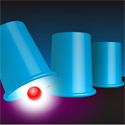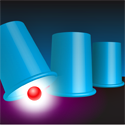Controlling for the “look-elsewhere effect”
One of the primary purposes of the Large Hadron Collider (LHC) is to search for the unexpected. Usually this means looking for a “bump” in the data—an excess of events over a known background level. Such an excess could be due to new physics. However, experimentalists must account for the fact that if they look at enough areas of parameter space, they are certain to see statistical fluctuations. To control for this “look-elsewhere effect,” the data must be normalized for the number of places searched in which a fluctuation could be observed.
The Compact Muon Solenoid (CMS) collaboration at the LHC has now performed many searches for new physics, and seen very few potential bumps. But, in a paper appearing in Physical Review Letters, in which they analyze data taken in 2010, CMS reports a small excess of events that could correspond to a pair of new giga-electron-volt particles, each decaying into three hadronic jets. According to theory, supersymmetric partners of the gluon, called gluinos, can produce such events if a symmetry known as parity is violated, but at a rate lower than what CMS has seen.
After taking into account the “look-elsewhere effect,” the statistical significance of the bump is only standard deviations. As of now, the collaboration has taken times more data than they did last year. Analyzing these new data should show whether CMS is indeed just seeing a fluctuation. – Robert Garisto





